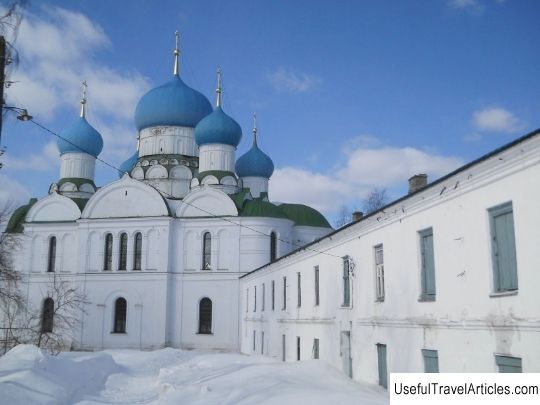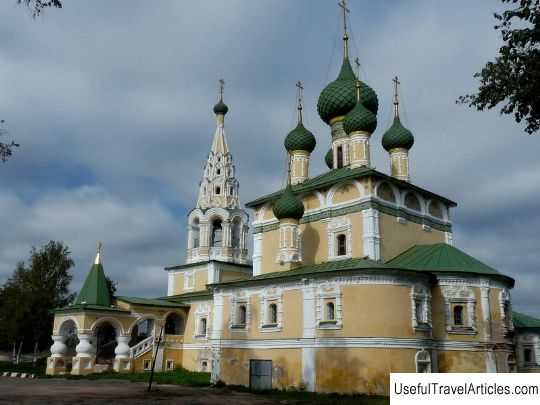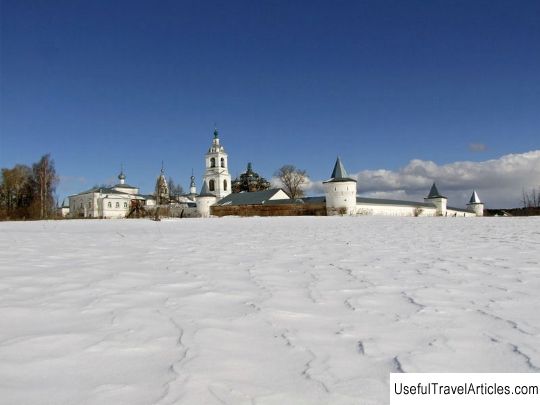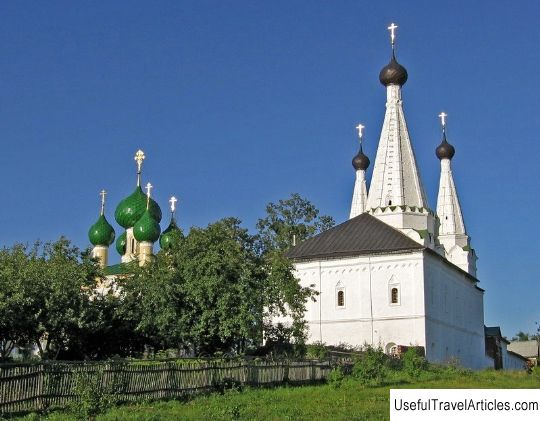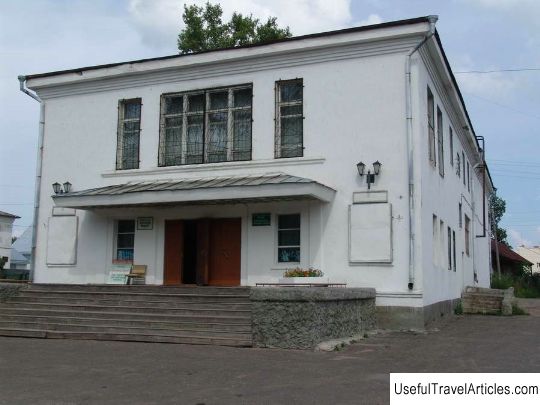Resurrection Monastery description and photos - Russia - Golden Ring: Uglich
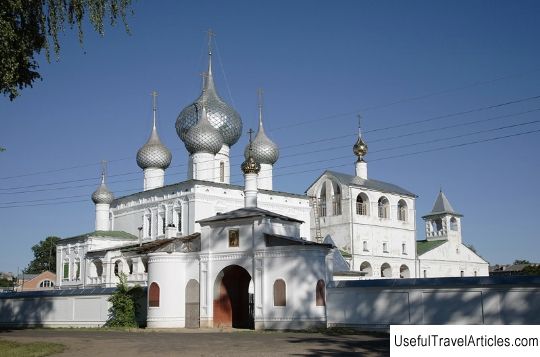
Resurrection Monastery description and photos - Russia - Golden Ring: Uglich. Detailed information about the attraction. Description, photos and a map showing the nearest significant objects. Photo and descriptionIn the city of Uglich there is an old Resurrection Monastery, the very first mention of which has never been found. There is evidence that at the end of the 14th century, a man's monastery operated at the site of the monastery, which consisted entirely of wooden buildings; this monastery was located near the shore, where the Trinity brook flows into the Volga. In the first decades of the 16th century, the famous Uglich landowners named Gryaznye, who came from the Romanov family, were buried at the monastery. After a while, in 1674, a full-scale stone construction was started on this territory. The funds for these works were generously donated by Metropolitan Jonah of Rostov, who took tonsure at the Resurrection Monastery. As soon as the construction work of the monastery complex was completed, everyone was struck by its incredible view - the ensemble itself stretched somewhat along a line running from north to south, which created a strong impression from either side. The monastery included: the Church of Mary of Egypt and the belfry with her, the Resurrection Cathedral, the Hodegetria temple with a refectory. Along the perimeter, the complex was surrounded by a fence equipped with the Holy Gates - to date, the previously lost fence has been completely restored. The last construction work was completed in 1677. The main church at the monastery is the Resurrection Cathedral, which is very close in appearance to the churches of Rostov the Great. The cathedral is five-domed, stands on an elevated basement, has a powerful central drum, two side chapels, consecrated in honor of Jacob and the Archangel Michael. On the western side, it includes a gallery-gulbische, which runs along the perimeter of the cathedral and leads to the belfry and the refectory room, emphasizing the integrity of the entire complex. The gallery, the central drum and the walls of the cathedral are beautifully decorated with glazed tiles, which are also on the walls of the belfry. Immediately behind the iconostasis, fragments of old paintings are still preserved, while some were supplemented already in the 19th century. The belfry, which is part of the Resurrection Monastery, seems small, but it still consists of four tiers. The lower tier is equipped with a gate that serves to enter the courtyard. The service one is the second tier, to which the gallery is attached, and the third tier has a church consecrated in the name of Mary of Egypt; the fourth tier is represented by a ringing tier with arched spans. The Church of the Smolensk Icon of the Mother of God has a refectory room and bears another name - Odigitrievskaya. There is a clock tower on the church, where the striking clock used to be. Initially, a tent was located above the tower, but in the 19th century it was replaced by a more suitable covering. When a new place was chosen for the monastery, it turned out that it was not very well chosen, because it has a weak sandy soil, while it is still being washed away from below by groundwater. This whole situation led to the fact that many buildings began to simply collapse. The abolition of the monastery took place in 1764, and the complex itself was given to the parish as a parish church. The holy gate and fence were completely dismantled. At the beginning of the 20th century, the previously functioning monastery was in a terrible state, after all, his appearance was greatly distorted. The parish tried to carry out restructuring, but this further aggravated its condition. During the Soviet era, the parish was immediately abolished. In the 1930s, the construction of the Uglich hydroelectric power station began, which is why the water level in the Volga rose noticeably - it was already clear that the monastery buildings could not be saved. But the complex stood until the 1950s, when its global restoration began. New technologies have significantly strengthened the soil and completely prevented the danger of buildings collapsing. In mid-1999, the Resurrection Monastery was given to the church, and a male monastery again began to operate in it. Over time, it was restored again and today this complex is one of the most famous in the whole of Uglich. The monastery again has the Holy Gates and the fence,           We also recommend reading Koversada island description and photos - Croatia: Vrsar Topic: Resurrection Monastery description and photos - Russia - Golden Ring: Uglich. |
